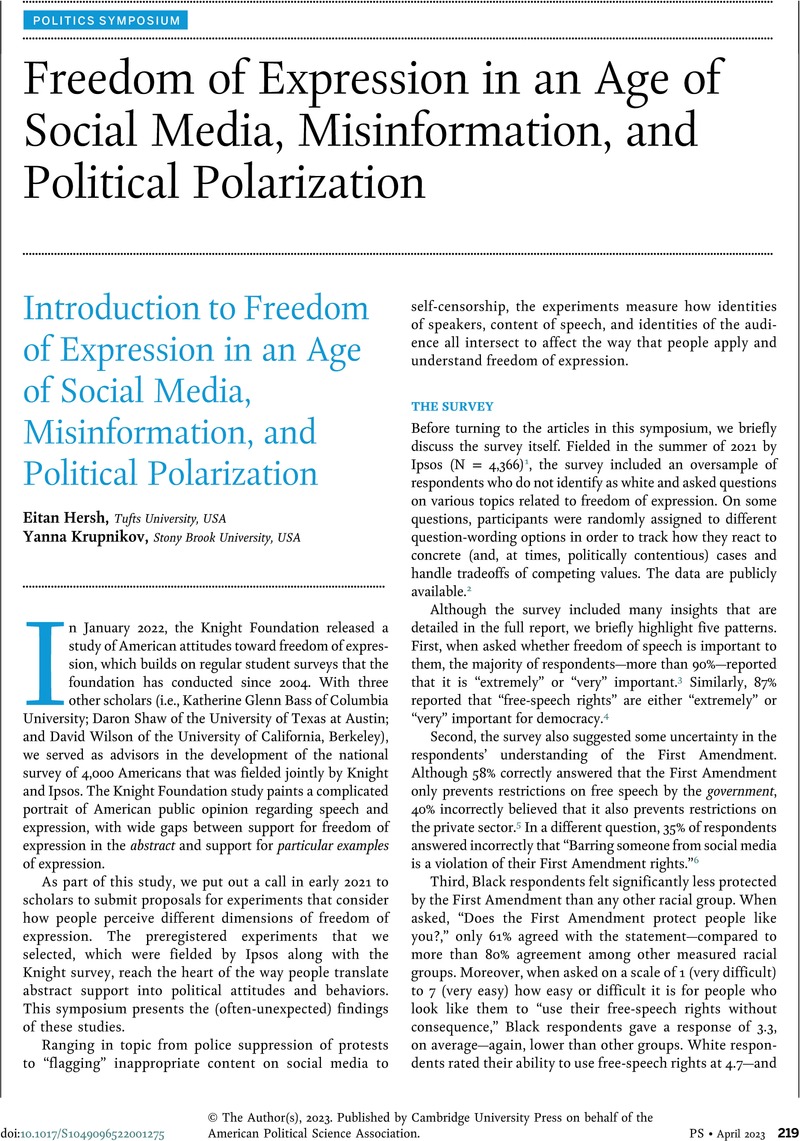No CrossRef data available.
Published online by Cambridge University Press: 05 January 2023

1. For more on methodology, see Knight Foundation and Ipsos, “Free Expression in America Post-2020, January 6, 2021. https://knightfoundation.org/wp-content/uploads/2022/01/KF_Free_Expression_2022.pdf.
2. Full data are available in the Ipsos/Knight Foundation Survey (Roper #31119146).
3. The question was: “How important, if at all, are the following to you?” Freedom of speech was listed with other rights: 63% reported that it is “extremely important”; 28% stated that it is “very important”; and 7% stated that it is “moderately important.”
4. The question was: “How important do you consider each of the following for democracy?” Participants were randomly assigned to various ideas, including “free-speech rights.”
5. Participants were asked whether the following statement is true or false: “The First Amendment prevents government restrictions of speech but not restrictions from the private sector.” Of the respondents, 58% correctly reported that the statement was true and 40% reported that it was false.
6. This question was asked as true or false. The incorrect response in this case was “true” (35% of respondents); 62% correctly answered “false.”